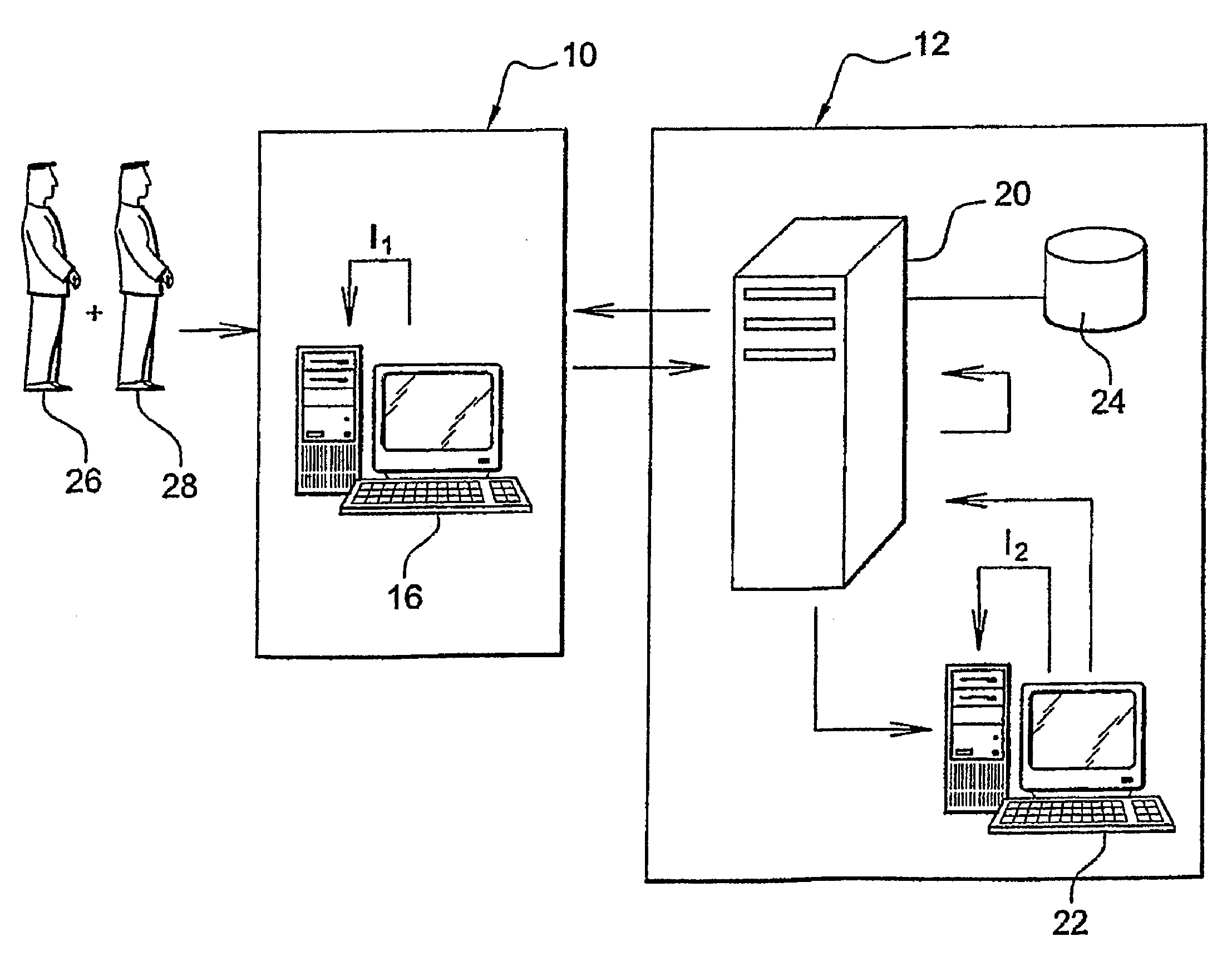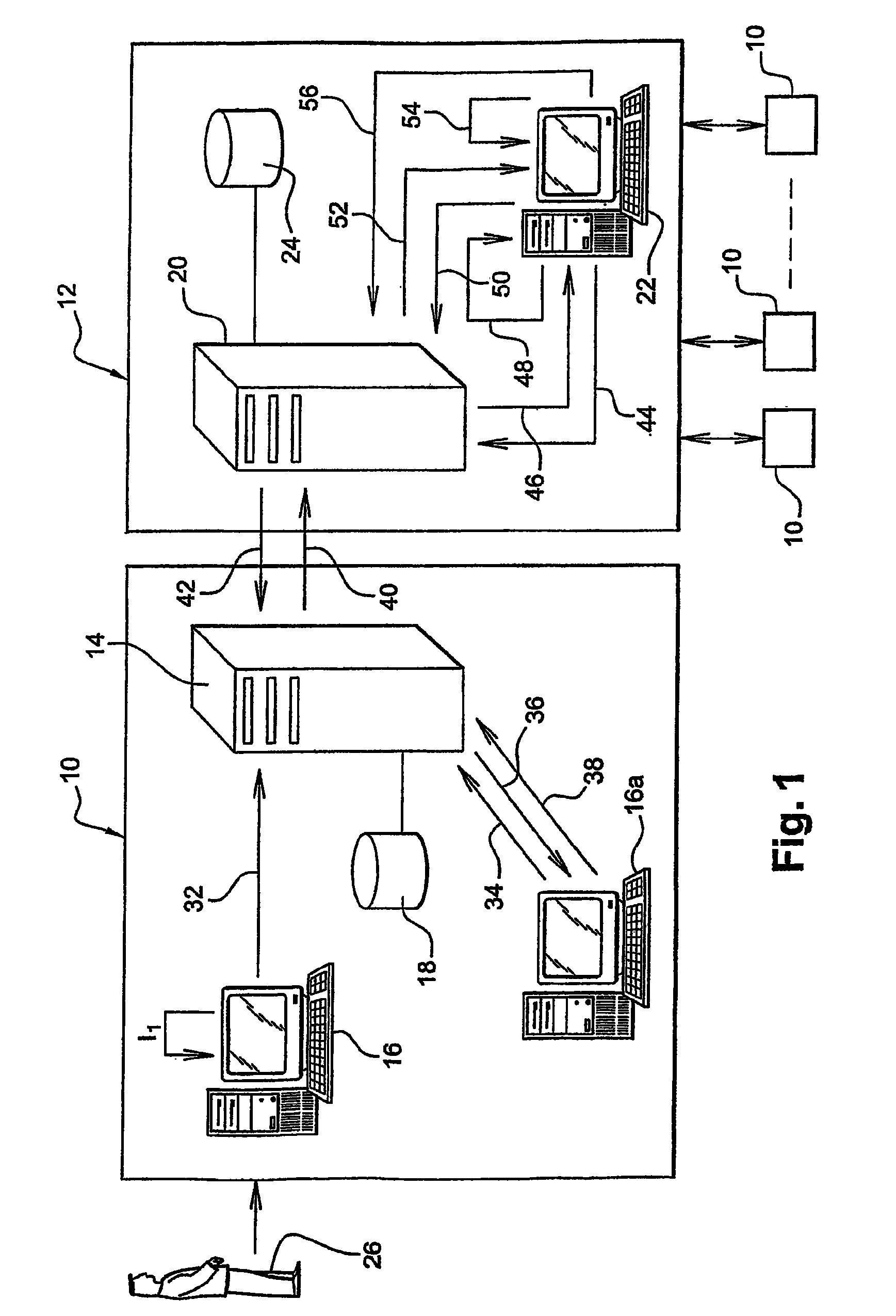Method of identifying data relating to individuals in order to chain said data
a technology of identifying data and individual data, applied in the field of identifying data relating to individuals in order to chain said data, can solve the problems of not meeting the needs of certain specialized centers, and achieve the effect of avoiding erroneous chains and risking confusion between different individuals
- Summary
- Abstract
- Description
- Claims
- Application Information
AI Technical Summary
Benefits of technology
Problems solved by technology
Method used
Image
Examples
Embodiment Construction
[0037]Reference is made initially to FIG. 1, in which reference 10 designates a local center for collecting data, which is connected by information transmission means, such as a telecommunications network, for example, to a central unit 12 also connected by said data transmission means to a plurality of other local centers 10 for collecting data.
[0038]Each local center 10 comprises a server 14 having connected thereto terminals 16 and a local database 18.
[0039]The central unit 12 comprises a server 20 having connected thereto terminals 22 and a central database 24.
[0040]When a patient 26 goes to a local center 10 for collecting data, a first encoded identifier I1 of the individual is created by inputting identification data of the individual via a terminal 16 installed in the reception office of the local center 10.
[0041]The identification data of the individual 26 comprises that person's surname (as at birth and not a customary surname or a married surname), given name (i.e. the fi...
PUM
 Login to View More
Login to View More Abstract
Description
Claims
Application Information
 Login to View More
Login to View More - Generate Ideas
- Intellectual Property
- Life Sciences
- Materials
- Tech Scout
- Unparalleled Data Quality
- Higher Quality Content
- 60% Fewer Hallucinations
Browse by: Latest US Patents, China's latest patents, Technical Efficacy Thesaurus, Application Domain, Technology Topic, Popular Technical Reports.
© 2025 PatSnap. All rights reserved.Legal|Privacy policy|Modern Slavery Act Transparency Statement|Sitemap|About US| Contact US: help@patsnap.com



